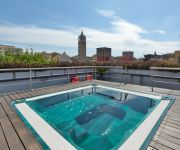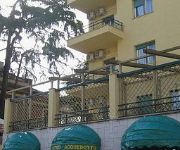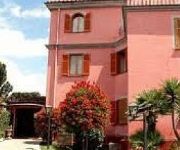Safety Score: 3,0 of 5.0 based on data from 9 authorites. Meaning we advice caution when travelling to Italy.
Travel warnings are updated daily. Source: Travel Warning Italy. Last Update: 2024-08-13 08:21:03
Delve into Appio-Latino
The district Appio-Latino of Rome in Province of Rome (Latium) is a district located in Italy and is a district of the nations capital.
In need of a room? We compiled a list of available hotels close to the map centre further down the page.
Since you are here already, you might want to pay a visit to some of the following locations: Ciampino, Tor Lupara, Frascati, Marino and Grottaferrata. To further explore this place, just scroll down and browse the available info.
Local weather forecast
Todays Local Weather Conditions & Forecast: 13°C / 56 °F
| Morning Temperature | 11°C / 52 °F |
| Evening Temperature | 13°C / 56 °F |
| Night Temperature | 15°C / 60 °F |
| Chance of rainfall | 1% |
| Air Humidity | 52% |
| Air Pressure | 1009 hPa |
| Wind Speed | Moderate breeze with 12 km/h (7 mph) from North-East |
| Cloud Conditions | Overcast clouds, covering 100% of sky |
| General Conditions | Light rain |
Friday, 22nd of November 2024
17°C (63 °F)
9°C (47 °F)
Light rain, fresh breeze, overcast clouds.
Saturday, 23rd of November 2024
11°C (52 °F)
8°C (47 °F)
Sky is clear, gentle breeze, clear sky.
Sunday, 24th of November 2024
11°C (53 °F)
9°C (49 °F)
Sky is clear, light breeze, clear sky.
Hotels and Places to Stay
Best Western CineMusic
Romoli Hotel
Hotel Appia 442
Rona Resort
Holiday Inn Express ROME - SAN GIOVANNI
Antico Acquedotto
Hotel Tuscolana
Arco di Travertino
Reboa Resort
Daniel's Inn
Videos from this area
These are videos related to the place based on their proximity to this place.
Rome City Tour Highlights
Highlights of Rome on a city tour including Colosseum, Roman Forum, Trevi Fountain, Piazza Navona and St Peter;s Square in the Vatican City. Taken on an MS Cruises City tour for more visit...
◄ Appian Way, Rome [HD] ►
The Appian Way - HD footage, information and facts on the Appian Way, also known as Via Appia Antica. Via Appia is an ancient 520 kilometer long road from Rome to Brindisi in southeast Italy....
Casa Vacanze Domus Camelia - Roma, centro Storico.
Domus Camelia è un PRESTIGIOSO APPARTAMENTO nel cuore di Roma (Esquilino/Termini/Monti), in Viale Carlo Felice 103, tra Piazza S. Giovanni in Laterano e Piazza Santa Croce in Gerusalemme ...
Appartamento in Vendita da Privato - Via Ludovico di Savoia 12, Roma
Vedi tutti i dettagli dell'annuncio su ClickCase.it: http://www.clickcase.it/villa-wolkonsky-centro-storico-roma-58811.html Descrizione annuncio: Da Privato. STRAORDINARIA OCCASIONE CAUSA...
Roma, Via Appia Antica, Ulli, Nadine, Frank -Nov-2006
Roma, Via Appia Antica, Ulli, Nadine, Frank Nov-2006.
Roma Italia Guia de Roma em portugues Alessandro Innocca
Guia de Roma em portugues A Villa de Maxêncio Maxêncio foi o último imperador pagão do Império Romano . Em 306 dC foi proclamado imperador pela Guarda Pretoriana em vez de Severo, ...
Videos provided by Youtube are under the copyright of their owners.
Attractions and noteworthy things
Distances are based on the centre of the city/town and sightseeing location. This list contains brief abstracts about monuments, holiday activities, national parcs, museums, organisations and more from the area as well as interesting facts about the region itself. Where available, you'll find the corresponding homepage. Otherwise the related wikipedia article.
Ardeatine massacre
The Fosse Ardeatine massacre (Italian: Eccidio delle Fosse Ardeatine) was a mass execution carried out in Rome on 24 March 1944 by German occupation troops during the Second World War as a reprisal for a partisan attack conducted on the previous day in central Rome. Subsequently, the Ardeatine Caves site (Fosse Ardeatine) was declared a Memorial Cemetery and National Monument open daily to visitors.
Amphitheatrum Castrense
The Amphitheatrum Castrense is a Roman amphitheatre in Rome, next to the church of Santa Croce in Gerusalemme. It is the second ancient amphitheatre of Rome after the Colosseum.
Porta Maggiore
The Porta Maggiore ("Larger Gate"), or Porta Prenestina, is one of the eastern gates in the ancient but well-preserved 3rd-century Aurelian Walls of Rome. Through the gate ran two ancient roads: the Via Praenestina and the Via Labicana. The Via Prenestina was the eastern road to the ancient town of Praeneste. The Via Labicana (now called the Via Casilina) heads southeast from the city.
Santa Croce in Gerusalemme
The Basilica of the Holy Cross in Jerusalem (Latin: Basilica Sanctae Crucis in Hierusalem, Italian: Basilica di Santa Croce in Gerusalemme) is a Roman Catholic parish church and minor basilica in Rome, Italy. It is one of the Seven Pilgrim Churches of Rome. According to tradition, the basilica was consecrated around 325 to house the Passion Relics brought to Rome from the Holy Land by St. Helena of Constantinople, mother of the Roman Emperor Constantine I.
San Sebastiano fuori le mura
San Sebastiano fuori le mura (Saint Sebastian outside the walls), or San Sebastiano ad Catacumbas (Saint Sebastian at the Catacombs), is a basilica in Rome, central Italy. Up to the Great Jubilee of 2000, San Sebastiano was one of the Seven Pilgrim Churches of Rome, and many pilgrims still favor the traditional list.
Circus of Maxentius
The Circus of Maxentius (known until the 19th century as the Circus of Caracalla) is an ancient structure in Rome, Italy; it is part of a complex of buildings erected by emperor Maxentius on the Via Appia between AD 306 and 312. It is situated between the second and third miles of the Via Appia between the basilica and catacombs of San Sebastiano and the imposing late republican tomb of Caecilia Metella, which dominates the hill that rises immediately to the east of the complex.
Santi Fabiano e Venanzio a Villa Fiorelli
Santi Fabiano e Venanzio a Villa Fiorelli, church on Via Terni, Rome. The parish was set up by Pope Pius XI, and the church opened for worship as the regional church of the Camerino region (served by diocesan clergy) in 1936. It was designed by Clemente Busciri Vici, with 3 naves, narrow side-aisles and a slightly slanting roof.
Santa Maria Ausiliatrice, Rome
For the church in Turin, see Basilica di Maria Ausiliatrice. The Church of Saint Mary Help of Christians in Via Tuscolana (Italian: Santa Maria Ausiliatrice, Latin: S. Mariae Auxiliatricis in via Tusculana) is a parish and titular church, minor basilica of Rome. The titulus S. Mariae Auxiliatricis in via Tusculana was established by Pope Paul VI on June 7, 1967, by the apostolic constitution "Ad gubernacula christianae".
Tomb of Eurysaces the Baker
The tomb of Marcus Vergilius Eurysaces the baker is one of the largest and best-preserved freedman funerary monuments in Rome. Its sculpted frieze is a classic example of the "plebeian style" in Roman sculpture. Eurysaces built the tomb for himself and perhaps also his wife Atistia around the end of the Republic (ca. 50-20 BC).
Park of the Caffarella
The Caffarella Park (Italian: Parco della Caffarella) is a large park in Rome, Italy, protected from development. It is part of the Parco Regionale Appia Antica (Appian Way Regional Park). The park is contained in the Caffarella Valley and is bordered on its northern side by the Via Latina and on its southern by the Appian Way. It extends lengthways from the Aurelian Wall up to the Via dell'Almone.
Catacombs of Marcellinus and Peter
The Catacombs of Marcellinus and Peter are ancient catacombs situated on the 3rd mile of the ancient Via Labicana, today Via Casilina in Rome, Italy, near the church of Santi Marcellino e Pietro ad Duas Lauros. Their name refers to the Christian martyrs Marcellinus and Peter who, according to tradition, were buried here, near the body of St. Tiburtius.
Caecilia Metella (daughter of Metellus Creticus)
Caecilia Metella (b. c. 100 BC, fl. 69 BC) was a daughter of Quintus Caecilius Metellus Creticus, who was a Consul in 69 BC. She married the Marcus Licinius Crassus who was the elder son of the famous Marcus Crassus and his wife Tertulla who and served under Julius Caesar in the Gallic Wars.
Catacomb of Callixtus
The Catacomb(s) of Callixtus (also known as the Cemetery of Callixtus) was one of the Catacombs of Rome on the Appian Way, most notable for containing the Crypt of the Popes, which contained the tombs of several popes from the 2nd to 4th centuries.
Capo di Bove
Capo di Bove is an archeological site on the Appian Way on the outskirts of Rome, Italy. It contains the thermal baths of a vast property owned in the 2nd century AD by Herodes Atticus and his wife Annia Regilla. Formerly privately owned, the property at No. 222 on the Appian Way was acquired by the Italian Government in 2002. The area of the baths was at that time being used for grape growing.
Demetrias (daughter of Anicius Hermogenianus Olybrius)
Demetrias (fl. 413–440) was a Roman noblewoman, member of the powerful family of the Anicii and acquaintance of several churchmen.
Acqua Santa Golf Club Course
The Acqua Santa Golf Club Course (Italian: Circolo Roma Acquasanta Golf Club) is an Italian golf course located along the Appian Way southeast of Rome. Constructed in 1903, it hosted the running portion of the modern pentathlon events for the 1960 Summer Olympics.
Sant'Antonio da Padova in Via Tuscolana
The Church of Saint Anthony of Padua on Via Tuscolana (Italian: Santi Antonio da Padova e Annibale Maria) is a Roman Catholic titular church in Rome, built for the religious congregation of the Rogationists of the Heart of Jesus, to whose founder Saint Annibale Maria di Francia is co-concercrated the church along with Saint Anthony of Padua. Having been completed in 1948 it was given to the Rogationists fathers, before being concercrated on 27 May 1965 by Cardinal Luigi Traglia.
Mausoleum of Helena
The Mausoleum of Helena is an ancient building in Rome, Italy, currently located on the Via Casilina, corresponding to the 3rd mile of the ancient Via Labicana. It was built by the Roman emperor Constantine I between 326 and 330, originally as a tomb for himself, but later assigned to his mother, Helena, who died in 328.
Furio Camillo (Rome Metro)
Furio Camillo is an underground station on Linea A of the Rome Metro. The station was inaugurated in 1980 and is situated under the Appian Way, at the junction of Via Cesare Baronio and Viale Furio Camillo, a street named after Roman general Marcus Furius Camillus, in an area where roads bear names of personalities from the earlieast history of Rome (including legendary ones and characters from the Aeneid).
San Giovanni (Rome Metro)
San Giovanni is an underground station on Line A of the Rome Metro opened in 1980. The station is located in Piazzale Appio at the beginning of Via Appia Nuova, beside the Basilica di San Giovanni in Laterano, from which the station takes its name With the opening of the first section of Line C, the station will become an interchange point in 2014. Work on the construction of that new line began May 21, 2007.
Church of Sant'Urbano alla Caffarella
The church of Sant'Urbano alla Caffarella is found on the edge of the Caffarella Park in the southeast of Rome. It was originally a Roman temple. In the 10th Century, the structure was modified and consecrated as a church and it was extensively altered in the 17th Century.
Tombs of Via Latina
The Tombs of Via Latina (Italian: Tombe di Via Latina) are Roman tombs, mainly from the 2nd century AD, that are found along a short stretch of the old Roman road of Via Latina, close to Rome, Italy. They now constitute an archaeological park and can be visited.
Sant'Antonio di Padova a Circonvallazione Appia
Sant'Antonio di Padova a Circonvallazione Appia (Saint Anthony of Padua at the Appian Ring-Road), a church in Rome, was made a cardinalate deaconry on 18 February 2012 by Pope Benedict XVI and assigned to Cardinal Julien Ries.
Roma Tuscolana railway station
Roma Tuscolana railway station (Italian: Stazione di Roma Tuscolana) is a major station serving the city and comune of Rome, Italy. It forms part of the Pisa–Livorno–Rome railway and the Rome–Fiumicino railway. The station is currently managed by Rete Ferroviaria Italiana (RFI). Train services are operated by Trenitalia. Each of these companies is a subsidiary of Ferrovie dello Stato (FS), Italy's state-owned rail company.
Gardagolf Country Club
The Gardagolf Country Club is an Italian golf course located in Soiano del Lago, close to the Lake Garda in the Province of Brescia. The first 18 holes (Red and White Course) designed by Cotton, Pennick, Steel & Partners were inaugurated on the 28th of June 1986, while the Yellow Course was added in 1990. The club hosted the Italian Open twice in 1997 and 2003, the Kronenbourg Open in 1993, and the Ladies Italian Open in 1990.














!['◄ Appian Way, Rome [HD] ►' preview picture of video '◄ Appian Way, Rome [HD] ►'](https://img.youtube.com/vi/LkIMjtfAj1s/mqdefault.jpg)










